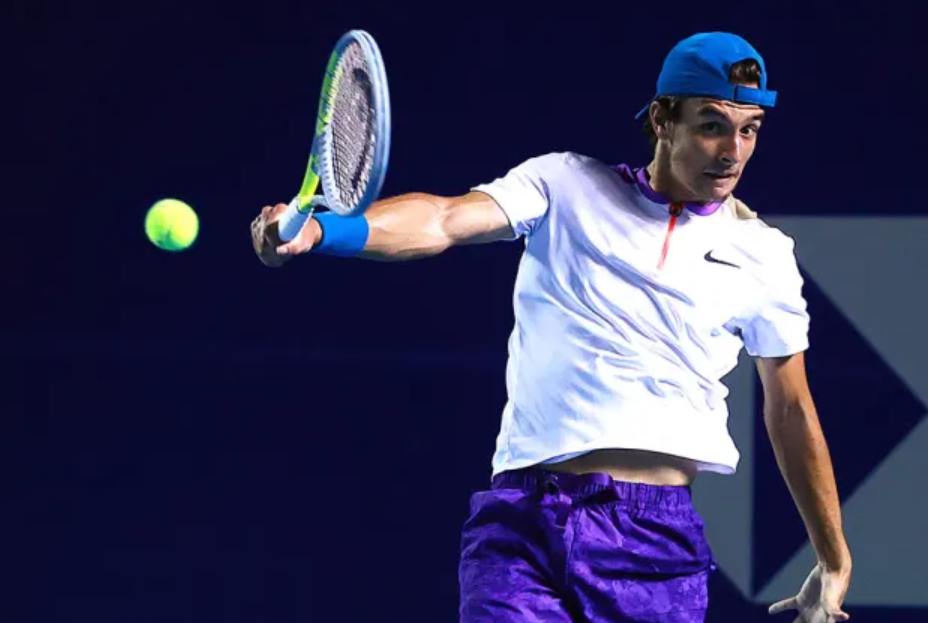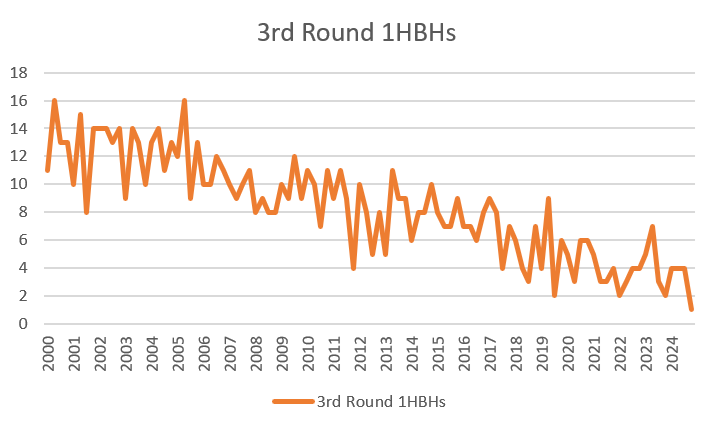
Previous: Trivia laptop #1
The next two weeks of tennis, the next two weeks little things. I still get to a fraction. In this installment, we will look at the countries with the Grand Slam Match, the fifth pace and the other sign that the one -sided back is dying.
Lebanon and the country with the main prizes
At the beginning of the Australian Open Fortight, the snakes Habib created history by becoming the first Lebanese player to win the Grand Slam match. I have a lot of questions. How many countries to do Do you have wins with big companies? The number of countries represented on the side of women is likely to be smaller than the true male genuine? And with Lebanon out of the board, who will be next?
First, clarification: Habib is not The first Lebanese player to win a match at Slam. It is the first in the open era. Noteim Hajjar reached the second round in Roland Garros in 1956 and then lost to Jozsef Asboth. (For a great ASBOTH story, see my Essay Roy Emerson From tennis 128.) This irreversible Habib’s success: He is the first Lebanese man to appear in a straw draw since 1962.
Let’s focus on the open era. I will not have fun in definitions, except for recognition that you could easily. No two sources do not agree on how many countries exist. Tennis is conventionally governed by the International Olympic Committee: for example, Puerto Rico is considered an independent entity, but not Scotland. There are also many tennis countries with victories that have changed their names (eg Rhodesia) or have ceased to exist (eg Yugoslavia). This is all the nightmare of the database. Lebanon has gone through three different IOC codes and I realized that I was using differently for Habib and his compatriot Benjamin Hassan. Hops.
Before Lebanon joined the list, 78 Today’s countries have won the straw of the main drawing of men. Habib does 79. Seven other countries appeared in at least one main chair match, but could not win.
As I guessed, the numbers are a little smaller for women. 66 The countries won victory in the main chair and the other six appeared. These numbers will soon move to 67 and 5, thanks to the newly aligned Armenian Elina Avanessyan. In her first two large companies, she went 0-2 in its current flag, but is only a matter of time until the best 50 best player returns in the main win.
Who is except Avanesyan, who is on board?
Here are top men who would be the first of their countries to win the main drawing match Slam:
Rank Player Country 171 Coleman Wong Hong Kong 250 Abedallah Shelbayh Jordan 332 Hazem Naw Syria 336 Eliakim Coulibaly Ivory Coast 619 Nam Hoang Ly Vietnam 623 Mitsuki Wei Kang Leong Malaysia 694 Samir Hamza Reguig Algeria 731 Colin Sinclair Northern Mariana Islands 852 Jesse Flores Costa Rica 887 Seydina Andre Senegal 932 Petar Jovanovic Montenegro
Wong is only 20 years old, so it is on the right track to add Hong Kong to the list of open periods. (The city state has achieved three victories in the amateur era.) Shelbayh is only seven months older, so it is also in a good place. Others are much more speculative.
The list of women is deeper. The above eleven men are the only ones in ATP top 1000 from the country without winning the match. There are 23 women who meet the same standard on the WTA table. Here are the first 13 of them:
Rank Player Country 136 Alexandra Eala Philippines 151 Victoria Jimenez Kasintseva Andorra 160 Kathinka von Deichmann Liechtenstein 201 Raluka Serban Cyprus 251 Justina Mikulskyte Lithuania 281 Lina Gjorcheska Macedonia 341 Sada Nahimana Burundi 404 Malene Helgo Norway 433 Francesca Curmi Malta 492 Klaudija Bubelyte Lithuania 552 Noelia Zeballos Bolivia 620 Aya El Aouni Morocco 678 Angella Okutoyi Kenya 687 Patricija Paukstyte Lithuania
Eala and VJK, both still teenagers, appear to be bets for the whole, but the idea. Von Deichmann has been knocking on the door for years. Lithuania has three representatives on this list, so it’s probably just time – although probably more time than Eala or VJK will last.
Momentum
This one is from Eric J e -mail:
Inspired by the 5-SAD victory of a student of TIENA over Medvedev (and his conversation after the match in which he granted to give up in the fourth set to get a break in the bathroom): Is there a recognizable trend in matches that lasts 5 sets or a player who wins the fourth set when he is more likely to win the fifth like his fifth rival?
Yes, it exists. There are three ways to drop to 2-1 in set: lose the first two (LLW), lose the first and third (LWL) or lose the second and third (wll). In large companies in the open era, for all these permutations, players who return to win the fourth, better than a neutral chance and have accepted the match have:
Sequence Win-Loss Win% LWLW 522-395 56.9% WLLW 541-455 54.3% LLWW 637-490 56.5% Total 1700-1340 55.9%
Edge has diminished a little in recent years. Here are the same numbers for Slams since 2000:
Sequence Win-Loss Win% LWLW 142-105 57.5% WLLW 168-144 53.8% LLWW 182-158 53.5% Total 492-407 54.7%
It’s not a big difference and I don’t want to read too much. But I was still surprised that the shift was in this direction. Tanking – usually to save energy, not racing for a toilet break – used to make it more common, even standard advice. If this effect is real, it is possible that players are generally more suitable than they used to be. Half a century ago could be a player who lost the fourth set, flowed, with little hope for recovery. This is less often.
Either way, there is a small driving edge for the fourth position winner. It is possible that checking the matches would change the results – perhaps stronger players will be more likely to come back from the slow start to force the fifth set.
One -stage
Only a few men stay on a one -handed backhand tour and joined for a bad fourteen days. Stefanos Tsitsipas and Giovanni Mpetshi Perricard lost in the first round. Grigor Dimitrov was forced to retire. This has left Lorenzo Musetti:
The decline was remarkably stable. I have the types of backhand for all third players in Slams back to 2000. At that time we left half -half (16 out of 32) of the third round in Roland Garros in 2000 and 2002. one in Melbourne.
This chart shows the number of one rags in the third round in each of the last 100 large companies:

This year’s Aussie is indeed the first major with only one rag in the third round. In 2019, we approached two in Wimbledon (Federer and Dan Evans), Roland Garros in 2022 (Dimitrov and Tsitsipas) and last year’s Australian (again dimitrov and tsitsipas).
Strangely, things have turned back back seven In Wimbledon in 2023, with the surprise of Christopher Eubanks and Christopher O’Connella, along with traces of dimitrov, musetti, shapovalov, tsitsipas and Stan Wawrinka.
Musetti lost the third round match with Ben Shelton, so the 16th round was the club only. At least so Not the first: the same happened to the US Open in 2022 and 2023.
It will do that today. Keep the suggestions and we will make more little things in a few weeks.
* * * *
Sign in to the blog and get each new post e -mail:














